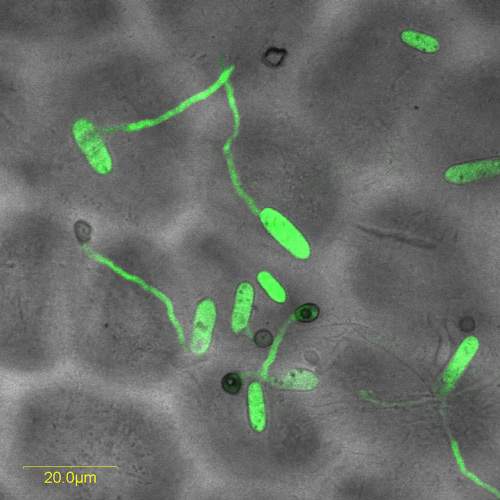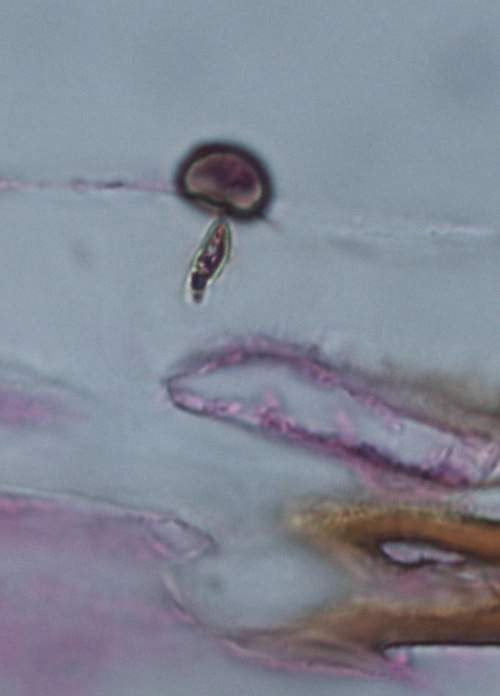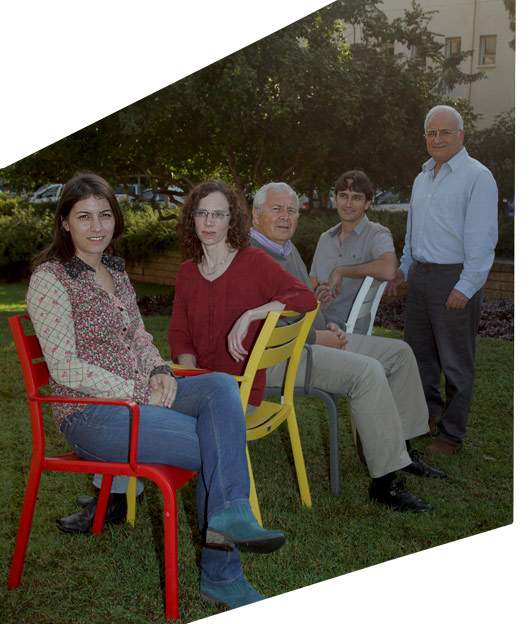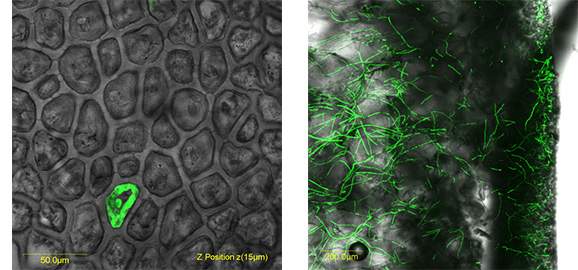The frustration is familiar: You buy a perfect, slightly hard avocado, mango or tomato, but by the time it ripens sufficiently to be eaten, it has developed soft rotten spots that force you to discard at least part of the fruit and wonder if you need to change your greengrocer. A new study conducted by Weizmann Institute scientists, in collaboration with Israel’s Agricultural Research Organization at the Volcani Center, reveals in great detail the stages of a fierce, protracted battle waged by the fruit to try to prevent the delayed rotting. The findings point to future preventive treatments.
The story begins long before the fruit makes its way to your greengrocer.
The new study, recently reported in the
New Phytologist, has shown that a widespread fungus,
Colletotrichum gloeosporioides, which infects close to 500 common plants and crops, starts its insidious invasion while the unripe fruit is still hanging on the tree. Once the fungus’s spore-like particles land on the fruit’s surface, they germinate. Within hours, each fungal particle grows a structure called an appressorium. This, in turn, releases a spear-like extension that pierces the fruit’s waxy surface and penetrates an unsuspecting cell, turning it into a “zombie” – that is, causing this cell to suspend most of its vital processes and devote itself to supporting the parasitic fungus. At this stage, the fungus switches into a dormant state that can last for months. To achieve such dormancy, the fungus structurally rearranges its chromosomes, shutting down hundreds of genes to reduce its own metabolism to the minimum required for maintenance.
Despite the furtiveness of the fungal attack, already at the initial, appressorial stage the plant senses the invasion by means of special cellular receptors and mounts a massive counterattack, activating thousands of genes, some of them encoding for antifungal compounds. These compounds are aimed at damaging the fungus and slowing its growth without affecting the plant’s own cells.
A fungus that survives the counterattack bides its time, encased within the fruit, and waits for ripening, a point at which the fruit’s defensive chemicals disappear. That is precisely when the fungus goes off like a time bomb. Emerging from the dormant state, it starts releasing an array of digestive enzymes that rapidly kill the surrounding plant cells. Using these dead cells as a new source of nutrients, it begins to multiply rapidly, causing the death of even more fruit tissue and creating spots of soft rot on what was the greengrocers' prized fruit.
The research was performed in tomatoes, a convenient plant because its genome is known and because its fruit is available year-round, but the findings are applicable to other plant species infected by Colletotrichum gloeosporioides. After sequencing the entire genome of the fungus, the scientists performed in-depth analyses, determining which genes were activated or shut down at different points of the infection and thus which enzymes and other substances were released, in the fungus and in the plant simultaneously, at each stage of the fungal infection.
The study was performed in the laboratory of
Prof. Robert Fluhr of the Weizmann Institute’s Plant Sciences Department; and by Dr. Noam Alkan of the Weizmann Institute and of the Agricultural Research Organization, with Prof. Dov Prusky and Dr. Dana Ment of the Agricultural Research Organization; and Dr. Gilgi Friedlander of the Weizmann Institute’s Nancy and Stephen Grand Israel National Center for Personalized Medicine.
On the basis of these findings, it should be possible to devise methods for fighting the time-bomb fungus: by developing tools to screen infected fruit, breeding plants with a heightened resistance to the infection or designing chemicals that affect the growth of the fungus but not plant growth or human health. Until then, as you cut out that rotten spot, you can at least marvel at this scene of a grand battle waged between the two kingdoms, fungal and fruit.
Prof. Robert Fluhr's research is supported by the Angel Faivovich Foundation for Ecological Research; Lord David Alliance, CBE; and the estate of David Levinson. Prof. Fluhr is the incumbent of the Sir Siegmund Warburg Professorial Chair of Agricultural Molecular Biology.



